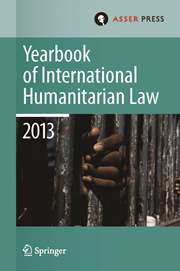Article contents
THE STATUS OF PEACE OPERATION PERSONNEL UNDER INTERNATIONAL HUMANITARIAN LAW
Published online by Cambridge University Press: 02 February 2010
Abstract
Current peace operations often include an element of enforcement. Such operations are based upon Chapter VII of the United Nations Charter and are regularly endowed with a right to use ‘all necessary measures’ to fulfil the tasks set down in the particular mandate from the UN Security Council. Such operations, moreover, are often deployed in unstable conditions that border on armed conflict, or in areas of existing conflict. At times, the military forces involved in these operations are also involved in the armed conflict itself.
The utilization of military force naturally raises the question of the legal status of personnel in peace operations under international humanitarian law (IHL). They represent the international community and as such are protected personnel. But how should they be treated from the perspective of IHL? Should they, despite their obvious military characteristics, be regarded as civilians? At what point, if any, could they be regarded as combatants? On the issue of change of status under IHL, does the same threshold apply for the operation's military forces as for other military personnel? Does the involvement of peace forces in an armed conflict, made up of contributions from a number of States, automatically cause that conflict to assume an international nature? Are the Convention on the Safety of United Nations and Associated Personnel and IHL, applicable in non-international armed conflicts, mutually exclusive? These dilemmas are well illustrated by the difficulties facing the International Security and Assistance Force (ISAF) in Afghanistan.
Keywords
- Type
- Articles
- Information
- Copyright
- Copyright © T.M.C. Asser Instituut and the Authors 2008
- 2
- Cited by


